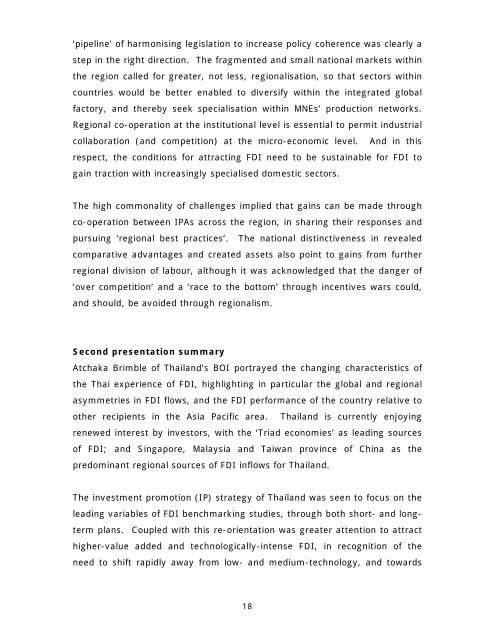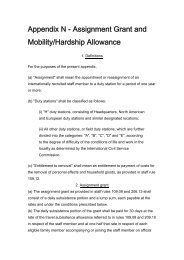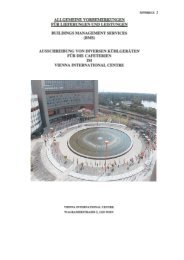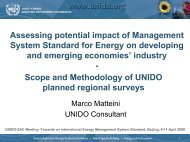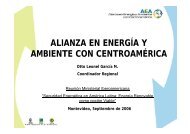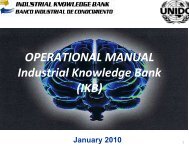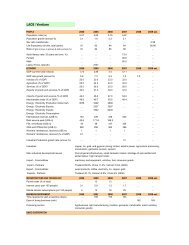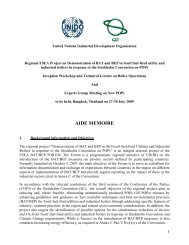Foreign direct investment in Southeast Asia: - Regional Office China
Foreign direct investment in Southeast Asia: - Regional Office China
Foreign direct investment in Southeast Asia: - Regional Office China
You also want an ePaper? Increase the reach of your titles
YUMPU automatically turns print PDFs into web optimized ePapers that Google loves.
‘pipel<strong>in</strong>e’ of harmonis<strong>in</strong>g legislation to <strong>in</strong>crease policy coherence was clearly astep <strong>in</strong> the right <strong>direct</strong>ion. The fragmented and small national markets with<strong>in</strong>the region called for greater, not less, regionalisation, so that sectors with<strong>in</strong>countries would be better enabled to diversify with<strong>in</strong> the <strong>in</strong>tegrated globalfactory, and thereby seek specialisation with<strong>in</strong> MNEs’ production networks.<strong>Regional</strong> co-operation at the <strong>in</strong>stitutional level is essential to permit <strong>in</strong>dustrialcollaboration (and competition) at the micro-economic level. And <strong>in</strong> thisrespect, the conditions for attract<strong>in</strong>g FDI need to be susta<strong>in</strong>able for FDI toga<strong>in</strong> traction with <strong>in</strong>creas<strong>in</strong>gly specialised domestic sectors.The high commonality of challenges implied that ga<strong>in</strong>s can be made throughco-operation between IPAs across the region, <strong>in</strong> shar<strong>in</strong>g their responses andpursu<strong>in</strong>g ‘regional best practices’. The national dist<strong>in</strong>ctiveness <strong>in</strong> revealedcomparative advantages and created assets also po<strong>in</strong>t to ga<strong>in</strong>s from furtherregional division of labour, although it was acknowledged that the danger of‘over competition’ and a ‘race to the bottom’ through <strong>in</strong>centives wars could,and should, be avoided through regionalism.Second presentation summaryAtchaka Brimble of Thailand’s BOI portrayed the chang<strong>in</strong>g characteristics ofthe Thai experience of FDI, highlight<strong>in</strong>g <strong>in</strong> particular the global and regionalasymmetries <strong>in</strong> FDI flows, and the FDI performance of the country relative toother recipients <strong>in</strong> the <strong>Asia</strong> Pacific area. Thailand is currently enjoy<strong>in</strong>grenewed <strong>in</strong>terest by <strong>in</strong>vestors, with the ‘Triad economies’ as lead<strong>in</strong>g sourcesof FDI; and S<strong>in</strong>gapore, Malaysia and Taiwan prov<strong>in</strong>ce of Ch<strong>in</strong>a as thepredom<strong>in</strong>ant regional sources of FDI <strong>in</strong>flows for Thailand.The <strong><strong>in</strong>vestment</strong> promotion (IP) strategy of Thailand was seen to focus on thelead<strong>in</strong>g variables of FDI benchmark<strong>in</strong>g studies, through both short- and longtermplans. Coupled with this re-orientation was greater attention to attracthigher-value added and technologically-<strong>in</strong>tense FDI, <strong>in</strong> recognition of theneed to shift rapidly away from low- and medium-technology, and towards18


